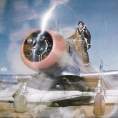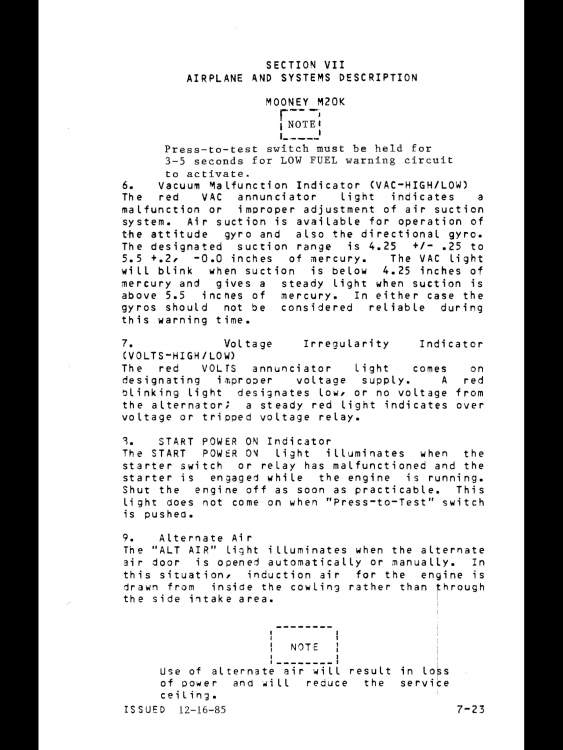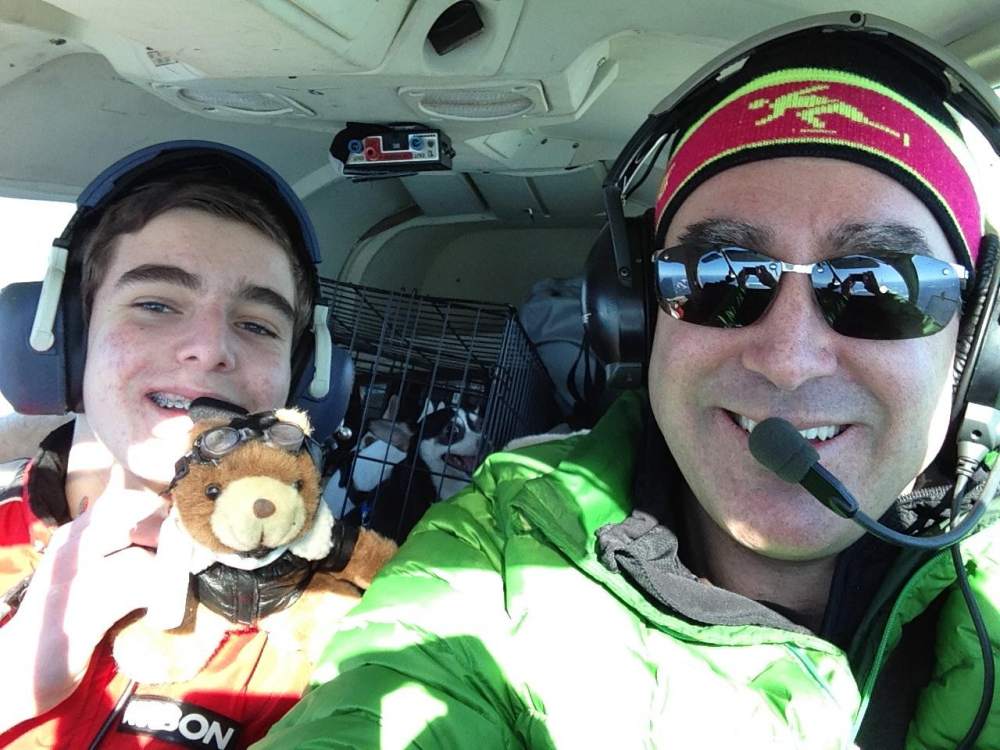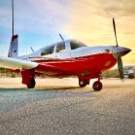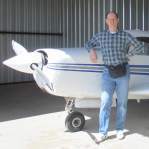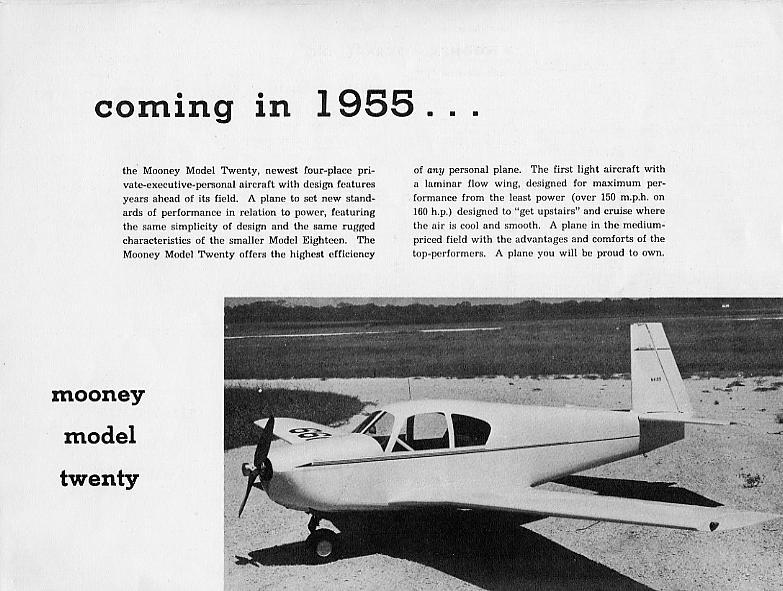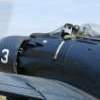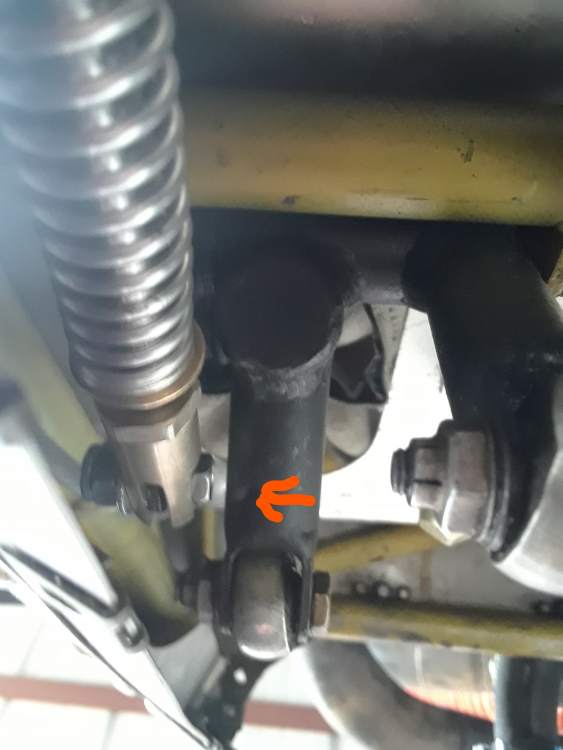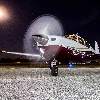Leaderboard
Popular Content
Showing content with the highest reputation on 12/31/2020 in all areas
-
Hey all, late to the party but a friend just sent this to me. I was the PIC (also, instructor with student) of this flight. Feel free to reach out with any questions6 points
-
JPI bayonet style probe is now installed and this has resolved the issue. Thanks for the help everyone!5 points
-
I have done quite a few Angel Flights. I did 16 missions this year and I think I am up around 40 something in total since I started several years ago. In my experience most of the patients are difficult cases. Cancer patients are the most common, and AF passengers often live in rural areas where there is no immediate access to commercial flights. An unsung saga at Angel Flight Central is that they arrange quite a few donated flights with Southwest Airlines. Out of the forty missions I can only think of one where I felt that the passenger probably did not need the help. Most of the patients we fly do not have the means. Honestly, Angel Flight flying can be a little difficult. I don’t mean the flying, or the passengers, or any of that. Many of the cancer patients are flying every week or every other week for chemo. After you flown someone to their chemo several times, and coordinated with other pilots who are doing the same thing, or have found flights for them when you cannot take the flight, and then you see the progression of their disease and the toll it takes on them and their families, well, you have to put your big boy pants on and be professional. Our job is to help and get them to the doctor. We can’t do our jobs if we get too tied up in the emotional part of it. The kids with glioblastoma are the hardest part. All of the patients I have flown have been profusely grateful.4 points
-
Wouldn’t be at best glide, but at minimum sink which is closer to Vx. Not that it makes much a difference but just saying.4 points
-
In 2108 I considered having my M20M used by Garmin to certify the GFC500. I ended up declining but let them know I may be willing to do the same if they decided to certify the GFC600 for long body Mooneys. This morning I received an e-mail out of the blue from Garmin and they mentioned that if there is enough interest (30-40 aircraft) they would consider certifying the GFC600 in the next few years for long body Mooneys. They asked a few questions back and forth in e-mails. I think this would be a great solution for a lot of us that don't have Garmin panels but down the road would like a new autopilot. (I have 3 Aspens and an Avidyne IFD50 and my King KFC150 is flying very well for now). The GFC 600 doesn't need a G5 or G3X. Garmin says, "Drawing on our top-end Garmin GFC 700 flight control technology, GFC 600 provides crisp, precise response and optimum performance over the entire airspeed envelope of your aircraft. Rather than depending on failure-prone mechanical gyros, the GFC 600 system is digitally controlled, using solid-state attitude and air data sensor reference — giving you ultra-smooth roundouts, intercepts and more while also enhancing system reliability. Offering a flexible upgrade solution, GFC 600 can be interfaced with a variety of Garmin and third-party instrumentation and navigation sources. The design of the GFC 600 includes environmentally hardened servos, allowing for installation in a wide range of airframes, including harsh operating conditions. The robust hardware used in the GFC 600 autopilot’s scalable architecture lets you tailor your system’s configuration to support the level of capability you want. Every component has been engineered to work seamlessly together to ensure optimum smoothness and comfort in flight — while helping to reduce pilot workload in the cockpit." If you're interested in the GFC600 for your airplane (M20L, pre-G1000 M20M, pre-G1000 M20R and M20S) in the next few years, let Garmin know: https://www.garmin.com/en-US/forms/autopilotinterest/.3 points
-
I'd normally be at the front of the line for the latest new upgrade to my airplane. In this case no way. From what I've heard the installation cost differential would be $10,000 in parts alone plus greater installation costs. I've had the GFC 500 for over a 1½ year now and it works perfectly. To date it has never failed due to GPS aiding necessity. Even if it did, an ILS could be hand flown. The GFC 600 has no mode controller that I can tell, so heading and altitude need to be controlled from some display somewhere. Given an already total Garmin Cockpit, the need for the GFC 600 is 0%. For those who don't have all Garmin the extra cost could possibly be justified, since there would be no need to buy other additional hardware. I think that Garmin will be hard pressed to find 40 or 50 airplanes whose owners would be willing to go that route--but I could be wrong. If someone asked me, I'd certainly say it wasn't necessary with the availability of the GFC 500.3 points
-
The procedure is outlined in Section III of the AFM. Basically approach speed of 80 KIAS, flatter approach, attempt smooth touch down. Allow 600 feet extra over a 50 ft obstacle. Then conduct Gear and Tire Servicing inspection as outlined in Section VIII of the AFM.3 points
-
Updated my 275. I only powered up the master so only the pfd was running. Updated the 7ish databases fine. I knew that it would share the update with other 275s when they came on. When I powered up for taxi the Mfd came up and said it saw updates and it would update. What I missed was some message on the pfd I didn’t see fast enough. As a result the pfd was not responsive on the flight at all. The knob didn’t respond the touch screen didn’t respond etc. I couldn’t set the altimeter. The mfd kept reverting and intermittently said it had a magnetometer failure. VFR so I didn’t worry too much. After stopping for gas and rebooting both I saw a message on the pfd asking if I’d like to update the mag variance on the mfd. I said yes and everything worked out. so make sure that after transferring the database from one 275 to another make sure to reboot both. And watch for questions closely. btw I’m told I should be able to push the updates to my gnx375 and it will push it to the 275s but haven’t figured out how to do that yet.2 points
-
Just a quick note to say Happy New Year and to say a BIG thank you to the folks on the board that have recommended me and our business over the years and those that we have sold Mooneys TO and FOR. You guys are great and I appreciate the referrals you guys post. While I know it is impossible to have a completely painless transaction every time (with the experience of the 1,000 Mooneys we have sold I can't tell you how many little things can go wrong on and plane and or its sale), I do work hard to make each transaction a smooth one and the support from the Mooney community is greatly appreciated. We closed the books on 2020 with 67 Mooneys sales closed (72 total sales including a few stragglers I sold for friends), which is by far our best year ever. 25 of those Mooney sales never hit the Controller site and were sold to our 'New Inventory' email blast list. I remember a guy on the forum early in 2020 that said he was waiting for the prices to plummet before he purchased a plane and I pointed out to him that I did not expect that to happen, that my phone volume and discussion with others in the industry told me something different. As it turned out, 2020 and the challenges that we have faced as a country and a planet did not seem to befall the small GA market. My contacts in the title, banking and insurance business have told me that they have never been busier. Prices are holding and in some cases have risen in the last 12 months. I have a theory on it, but just suffice it to say, at this time, I don't see the same issues in this market that I saw in the previous three market corrections since I started in 1995 (Tech Bubble Burst, 9/11 and Real Estate Bubble/Recession). I could be wrong, but it just feels different. So again, Happy New Year to all the MSers and here is wishing everyone a safe and healthy 2021 and beyond! If you are every in the area, let me know and I will buy you a Dr. Pepper. Jimmy2 points
-
I fly as many Angel Flights as I can each year. It's my favorite tax deduction every year no matter what the number is. To second what @jlunseth said, most just can't afford the fortnightly, (or how ever often) flights for regular treatment. An an hour or two in my Mooney is much easier on the patient than 5 or 10 hours in a car.2 points
-
Back of envelope calculations: Rebreathing cannulas and masks conserve O2 when the flow rate is low enough that it does not fill the reservoir between breaths. Once it does, any further O2 flow spills out during exhalation and is wasted. The cannulas with mustache-type cannulas hold about 25 cc (estimate), and a typical breathing rate is 15 breaths a minute. That means a flow rate up to 0.5 L/min is conserved. Any excess flow past that works like a normal nasal cannula, wasting about 50% of the O2 during exhalation. The upshot is that at low flow rates, demand regulators are probably no better than rebreathers. However, above a certain flow rebreathers no longer conserve, where demand regulators conserve at any flow rate. I suspect MH makes their claim about savings vs rebreathers at high flow rates, which would be correct, of course. If you figure rebreathers lose their benefit past 0.5 L/min, we can figure that is about 10% of the minute ventilation in the lungs (4-5 L/min with normal respiration). That gives you about 50% of your O2 at sea level from supplemental oxygen at this flow rate. At 10,000', not only do you lose 30% of your O2 from air, but 0.5 L/min gives you 30% less oxygen as well. So you can get the same O2 at sea level with full conserving flow from that rebreather only up to 10,000'. At 15,000', you lose 50% of your O2 and your conserving flow is 50% less, so that amounts to getting only 75% of your sea level O2 (or about the actual oxygen supply at 8,000'). A larger reservoir may partly offset this limit, but I suspect there are problems with larger reservoirs (CO2 accumulation?), so this might be the practical limit to reservoir size for sustained use. Most of the above numbers are guestimates or pulled from memory, so take with a grain of salt. TL;DR - Yes, demand regulators are better than rebreathing cannulas, but 40% better probably only happens at higher altitudes.2 points
-
IFR or rather IMC in the mountains in the winter = ice. You're better off staying in clear air with as much flexibility as possible and that means VFR. Flight Following is a good option, but stay VFR. I'd also plan to take a right turn at Pueblo, CO and draw a straight line from there to Scottsdale. No need to go any further south as long as you've got clear air.2 points
-
Having dealt with this a bit the onus is on Mooney to enforce its trademark universally. You can’t selectively enforce it. At least that is what the lawyers told us.2 points
-
2 points
-
unfortunately, people are very proud of their sl30's, unless you get lucky used isn't much cheaper than a new gnc2552 points
-
You can have back up instruments, or you can have a second 275 to meet the requirements.2 points
-
There is a bit of right rudder required especially on take off P factor. To do a left turn out on take off you don't push on the left pedal just release a bit on the right pedal. Cute trick showed to me by the CFII. I think I keep a bit of pressure on both pedals in cruise, probably a bit more on the right. It all just takes a subtle changes to fly the thing coordinated.2 points
-
Everything went smoothly. All the important stuff is in this thread. My summary is near the end. Skip2 points
-
For the S model it gives a UL increase to be equivalent to the R. No increase for the R model.2 points
-
Your referring to Chuck, think his last name was Noe or perhaps close. He created spreadsheet with different conditions including the prop stopped. I don't recall if he got 13:1 but the spreadsheet is here on Mooneyspace. What I derived for the J is 11.5:1 windmilling with prop pulled all the way back from the POH. The difference is dramatic compared to prop forward. Still can't imagine seeing a Mooney ride a thermal like a glider for any length of time - but now is the season to try on the Eastern slopes of the Sierra's! Sent from my iPhone using Tapatalk2 points
-
I didn't know that much about the MHOxygen systems, so I did some checking. According to their sales team, the On-Demand System (O2D2 orO2D1) will save an additional 40% over just using the Oxymizers with the built in system (Mooney). Anyone know if this is true? That's a pretty substantial savings and it might be worth the investment if most of your flights are in the teens or FLs.2 points
-
A simple way to ensure correct routing (assuming it is correct as currently installed) is to fasten a 50# monofilament fishing line, or an electricians pull line to the old unit prior to removal. Then use this line to pull the new one back in.2 points
-
2 points
-
This sounds right to me. When I had a Diamond DA40, I had one of the rare no autopilot examples. I got it for a fantastic deal - so it seemed - in 2007 right at the bottom of the great recession. And the school I was renting from went out of business and so if I would keep flying I had to buy something and I bought the pretty airplane a bit too quickly not knowing what i was doing. When I looked into adding the KAP140 which was the OEM autopilot at the time for my 2003 DA40 - I couldn't do it. There was no STC'ed install instructions and so not even a service center could do it. In the world of autopilots I guess you can't just improvise. The factory in London Ontario was allowed to do it, but they didn't want to. When I asked them they started trying to sell me on a different airplane. Which they succeeded in doing. I sold my DA40 and bought a Mooney.2 points
-
That's not really true anymore. It was that way some time ago but Garmin now allows 2 Nav sources to the G5 and you can select them. I have a GNC 255 and GNX 375 wired to GAD 29 and it is selectable between the GPS and the VOR.2 points
-
Check out the Precise system, very similar except it's purely mechanical, doesn't depend on electrical power and claims to fail at full flow. It wasn't designed for an altitude compensaring regular though like found in most Mooney's but they'll refund if it's not compatible with your system. With a good flow meter though like the Precise A5 and a Oxygen conserving canulla I can fly across country and back with my wife in the upper teens on my 115cuft bottle usually without a refill till I get home. I do my own refills as well. Sent from my iPhone using Tapatalk1 point
-
1 point
-
In Poland we have LPG, not LNG, and I suspect the ones in Czechia and Germany are also LPG; here the LPG terminals are self-serve and no training whatsoever is required; they indeed initially were "attendant only". I believe the station needs to be "manned" and at least one of the employees has to have special training, but they can focus on selling beer and leave the LPG to the drivers. None of the LPG powered cars I had a chance to drive were great, but people live with the downsides because the cost per mile is about half of unleaded. We also have CNG powered cars and buses, but I believe only one CNG filling place accessible to the general public, and it is "attendant only" indeed. I'd still try to go the SI-1070 route if I had a Lycoming engine...1 point
-
I thank all for your input. Cost difference , for both wings/ weep no more $6800 / wet wingolojist $89001 point
-
Regarding the afternoon turbulence, as you surmised it's a summer time thing. Even then I never hit severe turbulence in NM. In fact, not even moderate. My primary flight instructor told me that he's taken a smack upon a canopy in Diamond once hard enough that it knocked him out. But that was in Oklahoma, not in New Mexico. I learned quickly to steer to the upwind side of mountains, in order to avoid the orographic turbulence. But you're going to be high enough for that not to matter. Except for the wave, of course. As far as navigating to Scottsdale, I don't see just why that is a problem IFR. I only visited Phoenix area VFR and thus I had to be on a sharp lookout for the Class Bravo versus the rocks. But if you're IFR, all you need to do is to slow down ahead of time, so that you can lose altitude without gaining speed, right? I fly an E with electric flaps, so if I get under 120 mph indicated, I'm golden: as soon as the airplane is dirtied, I can dive as much as I want. About the survival, make sure you have water and trash bags. Most of the route is mostly flat. Now, coming up to Phoenix the terrain gets inhospitable: steep slopes, woods, reservoirs. That area is unpleasant, and the city itself is better only marginally. But it is what it is.1 point
-
The only time I'm that heavy is with max fuel for long distance XC, or with family, bags and med fuel going med distance XC. Landing immediately after takeoff would be for an emergency/system failure, with landing technique as stated previously. Sent from my Pixel 3a using Tapatalk1 point
-
1 point
-
It sounds weird, but when I had the same problem in the SuperCub, I cleaned up the battery ground on the advice of others on the SuperCub.org forum and it worked. Headset went crystal clear. I've experience it on other aircraft as well and cleaning up the battery ground, both the terminal on the battery and the cable to the airframe has worked. Do not forget the engine to airframe ground as well.1 point
-
1 point
-
And, come on man, we have to fly around this hornets nest of flight training every day, It is just flying. I was amazed at the lack of traffic everywhere on my recent trip to Pittsburgh. What happened to all the airplanes? So hay, If we have to deal with it ya'all can deal with it. Heck, if you want the full experience, go to TFD and shoot some approaches!1 point
-
1 point
-
1 point
-
My comments: Climb TAS: 100 Climb GPH: 22 Climb FPM: 800 Cruise TAS: 175 Cruise GPH: 12.5 Descent TAS: 200 Descent GPH: 9.5 Descent FPM: 800 I climb at at TAS of 120 and a rate of 500 fpm, easier on the engine for cooling and on passengers' ears. The plane can climb at 800 but it is working hard to do that for a sustained, long climb, such as a climb into the flight levels and you probably could not keep that rate going, esp. during the summer. At some point the CHTs would be getting too high and you would need to reduce the climb rate and increase speed to compensate. Cruise TAS is ok but it varies a great deal with altitude and the day. Roughly speaking, 150 kts at 6000 MSL or below, 155 up to around ten to twelve, 160 at twelve, 165 in the teens, 170 up to about 14-16 and 175 above that. Your fuel flow is right in the red box though, at or slightly rich of peak. The POH may say to operate there, but that is not easy on the engine. I choose between two, a LOP setting of 11.0 (I use 11.5 for fuel calculations, and I get the same or greater speeds than ROP up to somewhere in the mid-teens where there is too much heat, and a ROP setting of 13.3 (I use 13.5 for fuel calculations). Descent TAS is about right, varies quite a bit with altitude. I use 500 fpm on descent. That one is important for passengers' ears. I am a diver, I can clear my ears under just about any conditions, but passengers not so much. I fly Angel Flights and those passengers in particular I protect. My LOP setting is 34" MP, 2450 RPM, 11.1 fuel flow. I watch the fuel flow and the TIT, and reduce or increase fuel flow just a few tenths as the TIT allows. If TIT goes over 1600 I reduce fuel flow. When reducing fuel flow no longer keeps TIT under 1600, as at higher altitudes, then it is time to fly ROP. (I probably have some baffling leaks). My plane is a 231, a 252 with its better cooling, or an Encore with 10 more HP, would do a little better.1 point
-
Simple answer, no. To use your own aircraft for commercial purposes requires having a commercial operator's certificate as well as a commercial pilot certificate, and the aircraft also would have to be operated under commercial regs., such as can't be over TBO, must have 100 hour inspections. The worst part of the commercial operator's certificate is that you need commercial insurance to operate. When you filled out your insurance application you were undoubtedly asked questions about flight for hire and said no. If you conduct a flight for hire and have an accident, and you don't have commercial insurance, you don't have any insurance at all. You could not even split the cost of that flight with the dog owner, because to split cost there must be a common purpose and the only purpose is flying his dog for him. Bad news, sorry.1 point
-
If you haul 3 dogs somewhere, can the dogs cover 3/4 of the fuel? Does each dog require a seat? Or a seat belt?1 point
-
1 point
-
the other solution, to keep your original Compass, is to order the membrane and then repair. The liquid to put is deodorized petroleum distillate. https://www.chiefaircraft.com/aircraft/flight-instruments/compass-repair-parts.html1 point
-
1 point
-
There's a member here who is 6'9", but I don't recall what year his F is . . . . @Yetti So no, you aren't too big, but remember, a Mooney isn't a Suburban and won't have that mind of space.1 point
-
Looking at Skip's photo starting at the top/left which is the forward/left side of the airplane. The condition is full right pedal and nosewheel full right. The black bell crank with the bolt and castellated nut, through other linkages, drives the nosewheel and rudder. That bolt/nut is currently forward of the brake master rod end. At the bottom of the picture the condition is the opposite. Full left pedal has been applied and the bell crank has been pushed aft and passed the brake master rod end without interference. In my case there was interference and it nudged the brake rod aft enough to pressurize the master and apply the left brake. The contact came as a result of the master cylinder installer, instead of using a pin in the master rod end as in Skip's picture, used a bolt and a castellated nut which protruded enough to push the rod slight aft applying enough pressure to activate the left brake. The amount of movement was surprising small but apparently enough. As I said earlier I have very little free play in my brake pedals. The lousy picture shows my left side fix. A tiny witness mark can be seen on the black bell crank. The right side also had interference but not as much. My fix was to remove the existing nuts and bolts and install a shorter bolts with a lock nuts. As soon as I can acquire the correct pins I will install them. Clarences diagram and Skip's photo were invaluable to me in understanding how this system works and to solve this mystery. A great lesson and a good outcome. Thanks.1 point
-
I also carried a backup bottle. When above 18,000 and a second person is on board I have them use the portable bottle for redundancy.1 point
-
For the mask, I’d spend the money on one with a microphone built in. https://www.aerox.com/4110-712-microphone-mask-assembly-approved-to-tso-c103/ A little more up-front money saves on refills and is much more comfortable. https://www.mhoxygen.com/product-category/portable-pulse-demand/o2d2/ I have their boom cannula mounted to my Bose A20, and that is very satisfactory. the pulse systems work like a SCUBA regulator. They pulse a blast of air when you inhale rather than running constantly. It is much more comfortable and way less drying. your factory system uses Scott fittings. -dan1 point
-
https://www.preciseflight.com/general-aviation/shop/oxygen-equipment-general-aviation/products/masks-cannula/1 point
-
1 point
-
There are also two types of washout...geometrical where you can see the twist, and aerodynamic where you might not since the airfoil changes from root to tip, with the tip airfoil stalling at a higher angle of attack. The M20 wing has a different airfoil at the tip, but I don't know if it was done as a washout choice or for some other reason. Sent from my LG-US996 using Tapatalk1 point





